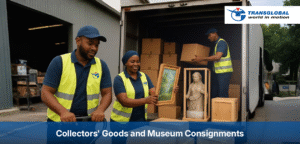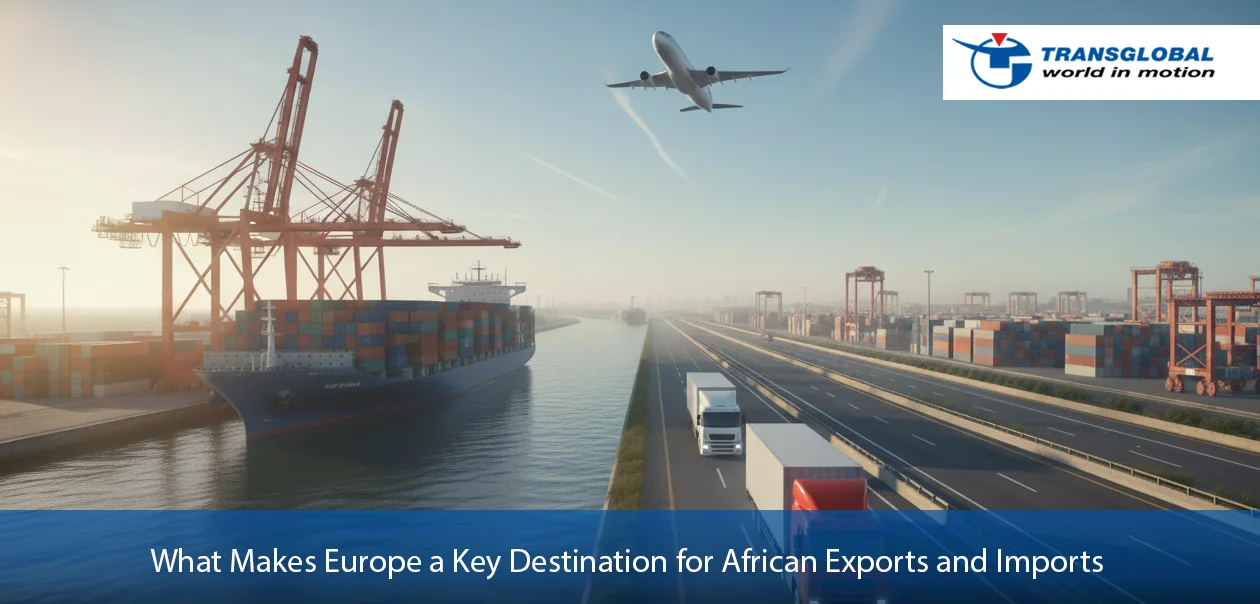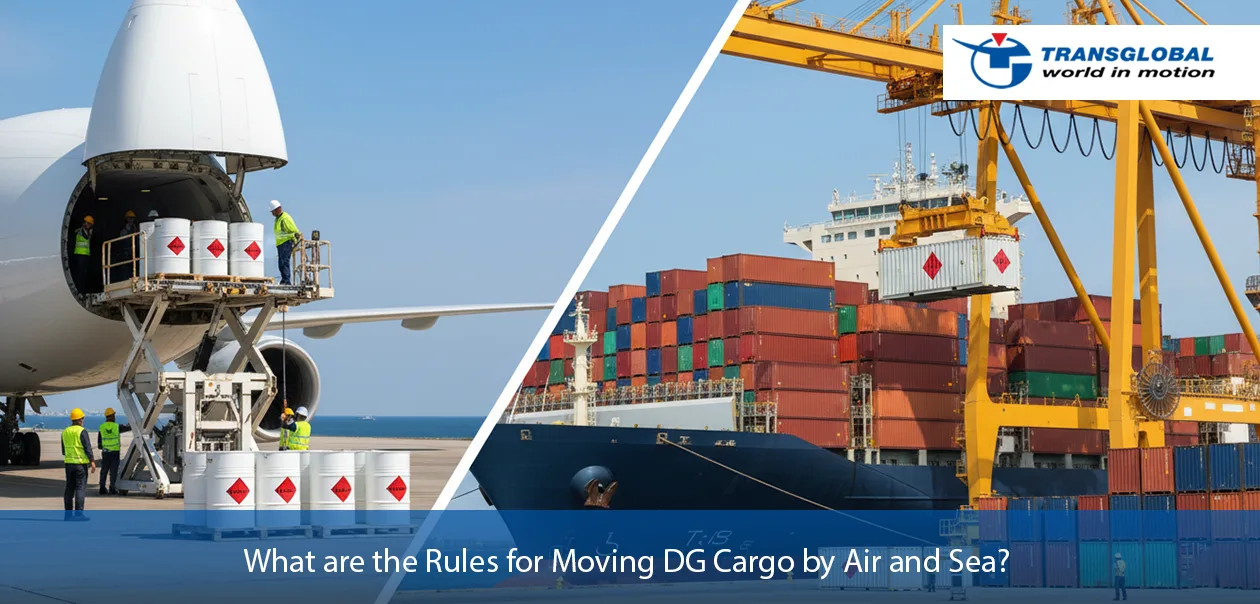South Africa is a land of crossroads. Each dawn, trucks rumble out of Durban’s docks, Johannesburg’s distribution hubs, and Cape Town’s packing sheds carrying everything from citrus and car parts to mining explosives and boutique wines. Those loads aren’t just freight, they’re deadlines, wages, and promises on wheels. Miss a cut-off at Beitbridge or Lebombo, and a copper mine shuts down or a supermarket shelf stays empty.
Now picture a driver easing onto the N1 with a GPS pinging every two minutes, an e-manifest already lodged with customs, and a clear plan for every weighbridge, toll, and border gate ahead. That calm confidence is the product of a good road freight strategy. In this guide, we’ll unpack what road freight service in South Africa is, why borders make or break delivery schedules, and the playbook Transglobal Cargo uses to keep trucks rolling through some of Southern Africa’s busiest crossings.
Road Freight in Plain Words
Road freight is the business of moving goods by truck; no fancy definitions are needed. It covers four everyday journeys:
- Port → Warehouse: pulling imports off the docks before demurrage fees kick in.
- Factory → Port: feeding export containers into the stack yard right on the stack date.
- Domestic long-haul: linking inland cities when rail slots are full or unreliable.
- Cross-border trips: delivering South African products to Botswana, Zimbabwe, Mozambique, Namibia, Zambia, Tanzania, China, Europe, and beyond.
Loads vary from full 40-foot containers (FCL) to loose pallets (LCL), break-bulk steel, temperature-controlled perishables, or oversized mine heads that need police escorts. Because trucks can start when you call and stop where you point, they remain the most flexible leg of the region’s supply chain.
Why are Borders the Main Obstacles?
South Africa shares land with seven neighbors. Each border has its own traffic rhythms, scanner queues, and lunchtime shutdowns. Miss one detail and a three-hour crossing balloons into an overnight park-up.
A forwarder that studies these flows, shift changes, scanner lanes, and quiet hours can trim half a day off transit times.
How Road Freight Gets Through Africa’s Borders?
1. Prep Before Wheels Roll
- Accurate export documents (invoice, packing list, permits) are compiled long before departure.
- Route plans weigh road quality, border hours, and plan B detours.
- Drivers hold specialist training, correct licences, and cash or e-wallets for ad-hoc fees.
2. First Checks at the Gate
- Officials inspect vehicle roadworthiness and load security.
- Customs verify paperwork; errors mean instant delays.
- Special cargo (DG, reefers, oversized) attracts extra inspections, proper labelling and permits speed things up.
3. Customs Clearance & Fees
- Duties, VAT, and border fees are calculated against tariff schedules and any trade-agreement rebates.
- Trusted clearing agents smooth payment hurdles where card facilities or banks are scarce.
- Multiple stamps, from customs, immigration, and health, must align before release.
4. Exit, Then Entry
- After exit clearance, the truck repeats the drill on the destination side: import docs, fee payment, and any final inspections.
- Delays from system outages or staff shortages are common; seasoned forwarders stay in touch with agents to reroute or re-book when needed.
Compliance: The Paperwork That Keeps Wheels Turning
The good news is that South Africa’s customs system is largely electronic. And the bad news is that one missing field still sends a truck to the back of the line. Here’s the basic checklist Transglobal loads before the engine even starts:
- SARS SAD 500 export or import declaration.
- SADC certificate of origin for duty rebates across the region.
- Electronic cargo manifest with QR code for border officers.
- Axle-weight certificate and over-dimension permit, if required.
- HazChem docs: Dangerous-Goods note, driver ADR license, spill kit log.
All files sit in a cloud folder linked to the truck’s registration. When border staff scan the QR code, every document opens instantly, with no digging through clipboard folders while the queue grows.
How Transglobal Keeps Trucks Moving?
Late cut-offs, no panic: Durban’s port delays a vessel? Containers rail overnight to Ngqura, reload, and still catch the sailing. The same “plan B” ethos applies on wheels: if Beitbridge chokes, a pre-cleared detour via Groblersbrug goes live.
Border playbooks: Drivers carry laminated “cheat sheets” showing which counter stamps which form, where to pay bridge tolls, and which fuel station is safe. It sounds simple, but those details save hours.
Live tracking, live alarms: Every truck pings its location, speed, and door status into the TransIT portal every two minutes. If a protest blocks the N1 or the driver deviates from the route, dispatch gets an alert and reroutes in real time.
- Specialist equipment on call.
- Reefers with gensets for fruit, pharma, or flowers.
- Low beds with police escorts for 40-ton transformers.
- Covered car carriers with padded straps for vintage vehicles.
- ADR tankers for acids, fuels, or radioactive isotopes.
One claims desk: If a tire bursts and damages cargo, you speak to one team that files with the insurer and carrier, not chasing three phone numbers.
A Road-Freight Journey, Step by Step
- Loading & seal check – The driver photographs the container seal and uploads it to TransIT for your files.
- Origin customs – The digital SAD 500 is lodged, and once “released,” the truck leaves the gate.
- On the road – Geo-fence alerts show safe rest stops, weighbridges, and potential hijack hotspots.
- Border in, border out – QR manifest scanned, duties paid (or bond stamped for in-transit), weight verified.
- Transit monitoring – You watch the truck icon inch across the map, and ETAs auto-adjust if traffic or weather hits.
- Final delivery & POD – The driver snaps the signed waybill, and your ERP updates inventory in real time.
- Empty return – The trailer heads back, or pivots to the next export pick-up, maximizing utilization.
Simple Survival Tips for Shippers
- Match HS code to invoice—mismatches cause 48-hour holds.
- Share axle weights—traffic police love spot checks.
- Pre-cool reefers—border waits can reach 40 °C; gensets only help if the cargo is cold to start.
- Book weekend deliveries—some importers close at noon on Saturday, plan off-loads, or face standby fees.
Conclusion
South Africa’s rolling lifeline is road freight, which connects the nation to its neighbors and replaces coastal ports with inland markets. However, every border offers a new challenge, such as the backlog of river bridges at Beitbridge or the scanning lines at Lebombo. The preparation and local knowledge make the difference between parking for the night and skimming through.
Transglobal Cargo combines completely compliant fleets with drivers taught in each post’s deviations, live tracking that detects problems before they cost you time, and fallback routes that keep cargo flowing even when the main gate stops. Those things can mean the difference between a handshake upon arrival and a broken promise when your customer is ticking down the hours and your delivery window is short. Do you require a vehicle that can cross borders rather than fingers? Together, we can determine the most efficient path and move your shipment.
Frequently Asked Questions
How long does Beitbridge take when the paperwork is perfect?
Average clearance for Transglobal trucks is 3–5 hours gate-to-gate, versus the corridor average of 10–12 hours.
Can you move explosives by road?
Yes. ADR-certified drivers, SAPS police escorts, and approved routes handle IMO Class 1 cargo safely.





Comments